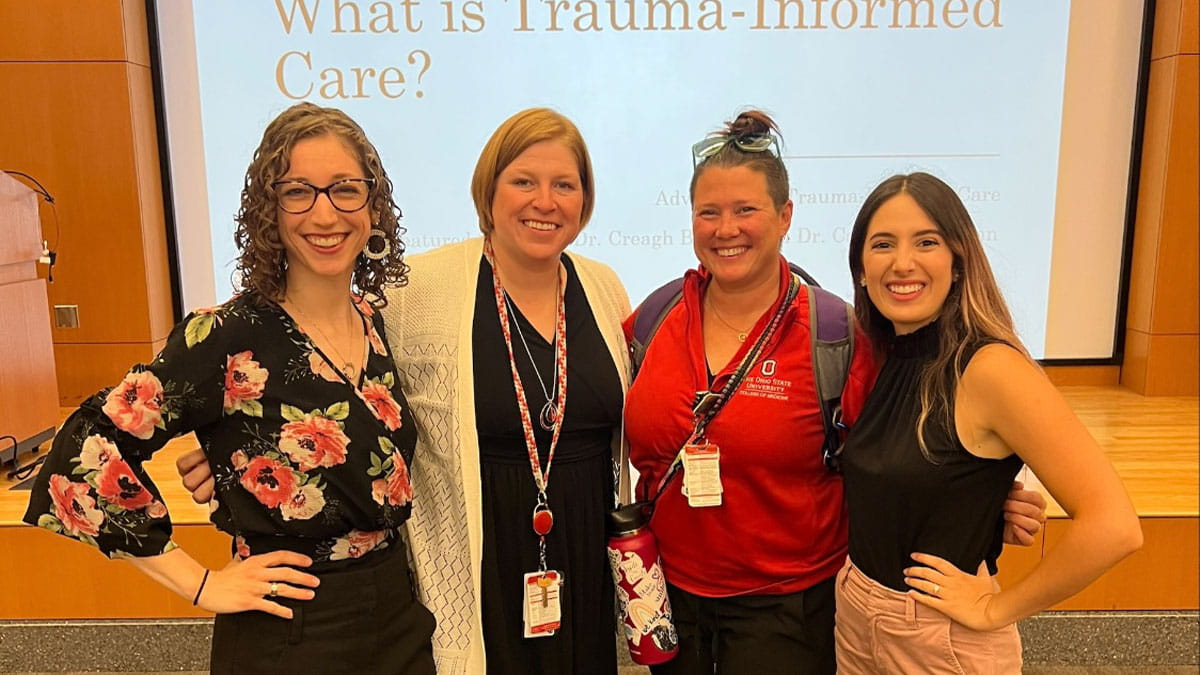Ohio State study shows older patients and their care providers give assistive devices rave reviews
.jpg) Assistive devices, such as walking aids and hearing amplifiers, can have a positive effect on an older patient’s experience navigating an emergency department, according to a recent qualitative study conducted by researchers at CATALYST—the Center for the Advancement of Team Science, Analytics, and Systems Thinking in Health Services and Implementation Science Research—at The Ohio State University College of Medicine.
Assistive devices, such as walking aids and hearing amplifiers, can have a positive effect on an older patient’s experience navigating an emergency department, according to a recent qualitative study conducted by researchers at CATALYST—the Center for the Advancement of Team Science, Analytics, and Systems Thinking in Health Services and Implementation Science Research—at The Ohio State University College of Medicine.
The study, published in the American Journal of Emergency Medicine, was conducted in a geriatric emergency department, or GED, which often describes a set of practices implemented in an existing emergency department to help older patients. The move to add assistive devices to GEDs came after national emergency medicine and geriatrics societies released joint guidelines in 2014 that outlined the value of such devices in other settings and recommended their use among emergency department patients.
“Assistive devices are recommended, as these patients typically do not bring their devices from home. Being without them makes it more difficult for patients to perform tasks such as walking to the restroom because of mobility issues or respond correctly to questions because of poor hearing,” says Naleef Fareed, PhD, MBA, an assistant professor in the Department of Biomedical Informatics at Ohio State and one of the authors of the study. Dr. Fareed is also a core faculty member with CATALYST.
By interviewing both patients and their care providers, the researchers were able to build a list of recurring themes in their responses. Overall, all of the participants said they felt access to assistive devices in the geriatric emergency department was beneficial, and patients in particular said they were offered the devices without needing to ask for them. Care providers who took part in the interviews said they found incorporating assistive devices allowed patients to be more engaged in their care.
“Older adults report more difficulty navigating the ED system, understanding how to call the nurse or provider, and being fearful during their visit. GED equipment may assist with these difficulties in communication and care navigation,” Dr. Fareed says. “We found that these devices helped the patient directly by affording them greater independence during their GED stay as well as indirectly by facilitating communication between the patient and provider. Studies suggest that increasing patient engagement is particularly relevant for older adults as it can increase adherence to treatment recommendations and improve outcomes.”
Assistive devices can also improve health care providers’ ability to assess a patient’s condition, he says.
“For example, providers in our study noted that walkers and canes made it easier to understand the patient’s mobility, and hearing aids allowed the patient to respond directly to their questions, helping to ascertain cognitive status. The impact of this improved assessment ability can be significant, as the decision to hospitalize a patient is often made based on the ED physician’s assessment of how the patient will be able to function at home with their new illness or injury,” Dr. Fareed says.
“There is a need to improve ease of use of these tools,” he says. “Providers in our study had only recently begun offering assistive devices as part of their care in a geriatric ED. They recommended reminders to use the devices tied to their assessments and keeping devices in a central location as ways to increase their use.”



